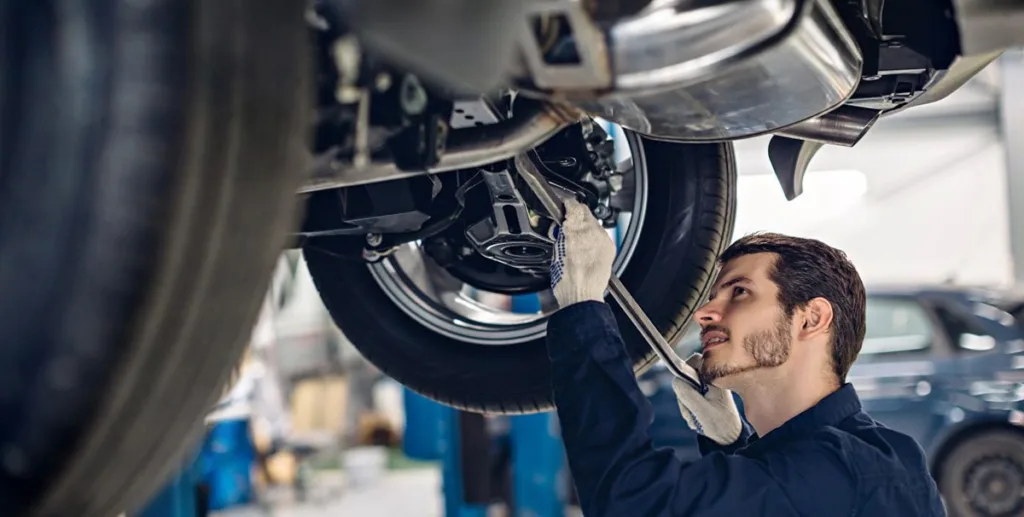All Categories
Featured
Correct tire upkeep is essential to expanding the life of your lorry and making certain a smooth and risk-free driving experience. 2 of the most vital tire solutions are tire turning and alignment. These solutions not only stop early tire wear however additionally enhance handling, gas performance, and general safety. If you're not familiar with what tire turning and positioning entail, here's an in-depth consider why they matter and how they benefit your lorry.
What Is Tire Turning? Tire turning refers to moving your tires from one placement to an additional to ensure they put on evenly. The factor tire turning is necessary is because not all tires put on the same method.
By revolving your tires regularly, you can stabilize out the wear across all four tires. This helps them last much longer and enables for even more also traction, boosting handling and stability. Most suppliers advise revolving your tires every 6,000 to 8,000 miles or according to the lorry's manual.
What Is Tire Alignment? Tire alignment, additionally called wheel placement, describes the process of changing the angles of your automobile's wheels to meet the supplier's specifications. The goal of alignment is to make certain that all four tires are directing in the appropriate instructions and at the proper angles, which enables ideal handling, security, and tire life.
There are 3 major placement angles that are adjusted throughout a placement check:

Camber: The tilt of the wheels when checked out from the front. If the camber is off, it can bring about unequal tire wear, as the tire will certainly not make full contact with the road surface. Caster: The angle of the guiding axis when checked out from the side. Proper caster placement guarantees that your vehicle is steady when driving straight which your wheel returns to its regular placement after a turn. Toe: The angle at which the tires aim inward or outside when checked out from above. Incorrect toe positioning can cause the tires to drag, causing irregular wear and lowered fuel effectiveness. Imbalance can occur with time as a result of typical driving or from hitting obstacles like curbs or pockets. If your placement is off, it is necessary to get it checked and fixed to avoid issues later on.
Why Tire Rotation and Placement Issue. Enhanced Tire Life:. Normal tire turning guarantees even tire wear, aiding you obtain one of the most mileage out of your tires. Unequal wear can cause you to replace tires prematurely, which can be pricey. When your tires put on equally, they last longer, conserving you cash in the long term.
Enhanced Automobile Handling:. Appropriate placement maintains your vehicle driving straight and secure, particularly at higher rates. Misalignment can trigger your automobile to pull to one side, making it more difficult to guide. By maintaining your tires lined up, you ensure your car takes care of much more efficiently and predictably.
Boosted Safety:. Tires that are not revolved or aligned properly can use unevenly, impacting just how well your lorry stops and edges. Misaligned tires or tires with uneven wear patterns might create minimized traction, particularly in wet or icy problems, leading to a greater risk of accidents.
Much Better Fuel Efficiency:. Tires that are misaligned can develop rolling resistance, suggesting your engine has to work more challenging to move the auto. This increases fuel usage and lowers your auto's fuel performance. Correct tire alignment minimizes rolling resistance, which can improve gas mileage.
Indications Your Tires Required Rotation or Placement. While it's necessary to remain on top of regular tire turnings and placements, there are a couple of indications that might indicate your tires require interest:
Uneven Wear: If you see that tire is much more worn than the others, it's likely time for a rotation. Guiding Pull: If your car draws away or feels off-center, it can be an indication of misalignment. Resonances: If you really feel vibrations in the steering wheel or the auto, maybe because of a positioning issue. Noisy Tires: Squealing or loud tires can suggest incorrect rotation or imbalance. If you see any of these indications, it is essential to get your tires checked by a professional.
Exactly How Often Should You Rotate and Align Your Tires? Tire turning must typically be done every 6,000 to 8,000 miles, though this can differ based upon your driving problems and the kind of car you drive. It's also a great concept to have your tires revolved whenever you obtain an oil modification.
For alignment, you should have your tires straightened every 1-2 years, or a lot more often if you notice any type of problems with handling or uneven tire wear. If you struck a huge pit or visual, it's a good idea to obtain a placement examine as soon as possible.
Verdict: Regular Maintenance for Optimal Performance. Tire turning and positioning are 2 easy but important solutions that keep your auto running smoothly, effectively, and securely. By revolving your tires frequently and maintaining your wheels appropriately straightened, you can expand the life of your tires, enhance handling, and delight in better fuel effectiveness. Do not await your tires to show indications of wear-- timetable regular maintenance to keep your automobile in leading form. Normal tire care is an investment that pays off in the lengthy run, maintaining you and your passengers risk-free when driving.
Latest Posts
Explore Save Big on Car Maintenance with Montclare Auto Repair’s Exclusive Deals
Check Out the Premier Auto Repair Discounts in Montclare, Chicago
Find Affordable Auto Repairs with Montclare’s Exclusive Service Specials
More
Latest Posts
Explore Save Big on Car Maintenance with Montclare Auto Repair’s Exclusive Deals
Check Out the Premier Auto Repair Discounts in Montclare, Chicago
Find Affordable Auto Repairs with Montclare’s Exclusive Service Specials